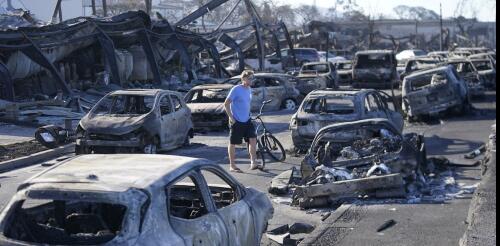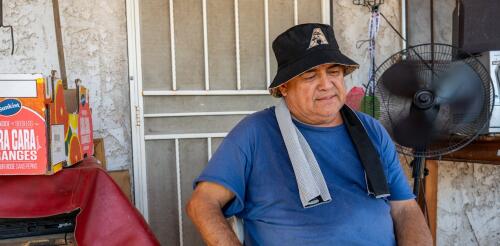Health risks
When summer starts with a stifling heat wave, as many places are seeing in 2024, it can pose risks for just about anyone who spends time outside, whether they’re runners, people who walk or cycle to work, outdoor workers or kids playing sports. Susan Yeargin, an expert on heat-related illnesses, explains what everyone should think about before spending time outside in a heat wave and how to keep yourself and vulnerable family members and friends safe. What risks do people facing running, walking or working outside when it’s hot out? The time of day matters if you’re going for a run, or if you’re walking or cycling to work during a heat wave. Early risers or evening runners face less of a risk – the Sun isn’t as hot and the air temperature is lower. But if your normal routine is to go for a run midmorning or over lunch, you probably want to rethink exercising in the heat. Pretty much everywhere in the U.S., the hottest part of the day is be...
Flint, Michigan, made headlines in 2015 when tests revealed dangerously high lead levels in its drinking water. The city had switched its water supply to the Flint River a year earlier, and corrosive water had damaged aging lead pipes, exposing thousands of people to lead contamination. The result was a human health crisis that residents are feeling the effects of to this day. And Flint was only the tip of the iceberg. The EPA estimates that 9.2 million service lines that deliver drinking water to U.S. homes and businesses are made of lead. The federal government considers replacing these lead pipes a top priority and has launched a variety of initiatives to help, including the 2021 Infrastructure Law, which committed US$15 billion over five years to lead pipe replacement. The EPA is now proposing to require the removal of lead pipes across the U.S. within 10 years. The agency has been silent, however, regarding what should replace lead....
PFAS, the “forever chemicals” that have been raising health concerns across the country, are not just a problem in drinking water. As these chemicals leach out of failing septic systems and landfills and wash off airport runways and farm fields, they can end up in streams that ultimately discharge into ocean ecosystems where fish, dolphins, manatees, sharks and other marine species live. We study the risks from these persistent pollutants in coastal environments as environmental analytical chemists at Florida International University’s Institute of the Environment. Because PFAS can enter the food chain and accumulate in marine plants and animals, including fish that humans eat, the spread of these chemicals has ecological and human health implications. Biscayne Bay and nearby coastal areas are teeming with fish, including many varieties that people eat. NPS image by Shaun Wolfe I...
People returning to what remains of the beachside town of Lahaina, Hawaii, and other Maui communities after one of the nation’s deadliest wildfire disasters face more dangers, beyond the 2,700 buildings destroyed or damaged and dozens of lives lost. The fires also left lingering health risks for humans and wildlife. When fires spread through communities, as we’ve seen more often in recent years, they burn structures that contain treated wood, plastics, paints and hazardous household wastes. They can burn vehicles and melt plastic water pipes. All of these items release toxic gases and particles. Many airborne pollutants fall to the ground, and when debris or dust is stirred up, hazardous particles can enter the air, where people can easily breathe them in. Chemicals can also contaminate water supplies. On Aug. 11, 2023, Maui County issued an “unsafe water” alert for areas of Lahaina and Upper Kula that were affected by wildfires, warning residents to u...
Scorching temperatures have put millions of Americans in danger during recent heat waves, with heat extremes hitting states from coast to coast. Phoenix hit 110 degrees Fahrenheit (43.3 Celsius) or higher every day for over three weeks in July 2023. Other major cities, from Las Vegas to Miami, experienced relentless high temperatures, which residents described as “hell on earth.” While the evening news runs footage of miserable sunbathers and joggers dousing themselves with water, these images conceal a growing hidden crisis: the millions of older adults who are suffering behind closed doors. As researchers who study older adults’ health and climate change, we have found that two societal trends point to a potentially dire future: The population is getting older, and temperatures are rising. During the July 2023 heat wave, people gathered at the Justa Center, a day cooling center in downtown Phoenix for people age 55...




